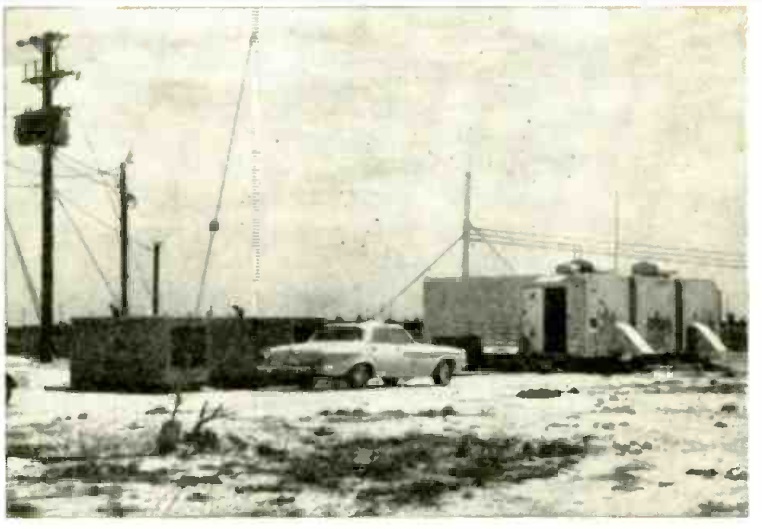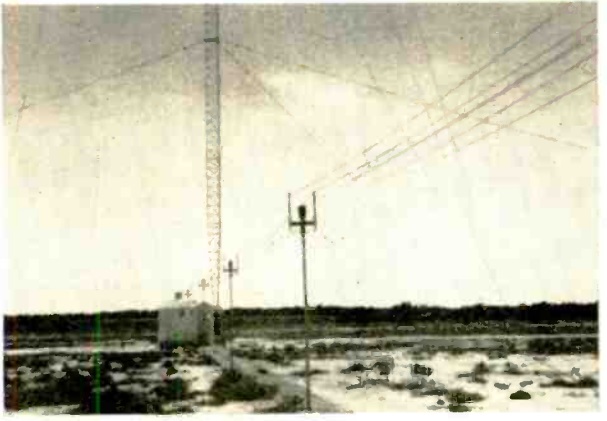 In the wake of the Cuban missile crisis, the U.S. Government realized that it needed a way to directly reach the Cuban people with a message of democracy. That was the job of the Voice of America (VOA), but the broadcaster’s shortwave transmitters were ill suited to blanket coverage of the island only 90 miles away from the United States.
In the wake of the Cuban missile crisis, the U.S. Government realized that it needed a way to directly reach the Cuban people with a message of democracy. That was the job of the Voice of America (VOA), but the broadcaster’s shortwave transmitters were ill suited to blanket coverage of the island only 90 miles away from the United States.
The standard AM band was the way to go, and the station shown here was hastily put together, and the facilities in these three trailers were used to relay the VOA Spanish program with a 50,000 watt signal on 1180 kHz, beamed south to blanket Cuba. The frequency was shared with WHAM in Rochester, NY, but because of the directional antenna, very little of the signal could be heard in North America.
The August 1963 issue of Popular Electronics carried an article by William I. Orr, who got a tour of the station and wrote a description.
The VOA had another transmitter in Florida covering Cuba, which broadcast on 1040 kHz, a frequency shared with WHO in Des Moines. That frequency is no longer in use, but the 1180 kHz frequency is still used. In 1983, Radio Marti was spun off, which content targeted specifically to Cuba. In 1990, a television signal was added, broadcasting from a tethered balloon dubbed “Fat Albert” by locals.

